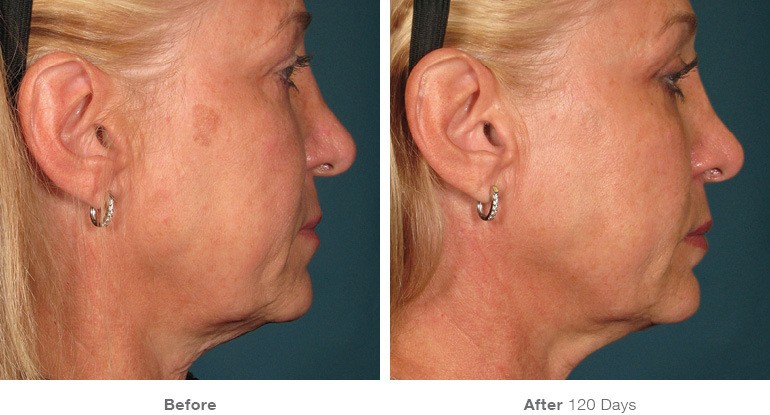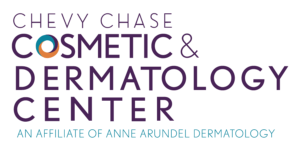Ultherapy or Thermage? Which Non-Surgical Skin Tightening Treatment is Best for You?

 Ultherapy or Thermage? Which Non-Surgical Skin Tightening Treatment is Best for You? Everyone ages.
Ultherapy or Thermage? Which Non-Surgical Skin Tightening Treatment is Best for You? Everyone ages.
Ultherapy versus Thermage: Which Is Right For You?
Laugh lines, crow’s feet, droopy jowls, heavy eyelids and turkey necks. They’re just a fact of aging skin for most people. Some choose to — quote — age gracefully, but who’s to say you can’t age gracefully… with a little help from your dermatology team at Chevy Chase Cosmetic Center?! There’s surgery, and then there’s the non-invasive cosmetic procedures to take years off your appearance without having to go under the knife. Non-invasive procedures have grown in popularity over the last several years as a great alternative to a traditional facelift. The non-surgical procedures are designed specifically to reverse the signs of aging by stimulating the deep layers of the skin to initiate cellular renewal. If you want results without having to resort to surgery, the way we see it, you have two options: Ultherapy and Thermage.
What is Ultherapy?
The only non-invasive treatment of its kind to be approved by the FDA, Ultherapy uses focused ultrasonic energy to lift the skin on the neck, chin, brow, and décolletage. The Ultherapy procedure stimulates collagen product by delivering focused ultrasound energy in the form of heat to the skin’s foundational layer typically addressed in traditional cosmetic surgery - without cutting or disrupting the surface of the skin. Bypassing the surface of the skin, heat is delivered at the right depth and temperature triggering a natural healing response under the skin and jumpstarting the regenerative process that produces fresh new collagen. Collagen continues to develop for up to six months from the day of treatment. Advantages
- Ultherapy can get rid of that troublesome “turkey neck”—the loose skin that becomes so common after a certain age —has before only been treatable via surgical facelift. It also helps to better define the jawline and lift the brows.
- A full Ultherapy treatment of the face and neck will take just 60–90 minutes to complete. The patient will need additional time for pre-treatment relaxation if oral medications for pain management is desired.
- Ultherapy is non-invasive, and requires no anesthesia; as such, an Ultherapy treatment will require little to no downtime for the patient. However, if the patient chooses oral medications for pain management, it will require rest following treatment, and a licensed driver to take them home. By the next day, the patient is back to their regular routine, and no one will know they’ve had anything done!
Disadvantages
- The results are not instant: It may take a patient two or three months to notice a difference and up to four to six months for optimal results. For most patients in the Washington, DC metro area who do not want people to know they've had some work done, they like the gradual, natural progression of a more youthful appearance. .
- The results are not permanent due to the natural aging process. The skin is visibly tighter and collagen rebuilds over time, so the effects of an Ultherapy procedure can last for many years to come.
Ultherapy In The Media
What is Thermage?
Thermage is an FDA-approved method used by cosmetic dermatologists to tighten, smoothen, and contour skin, with the aid of radio frequency energy. It works by delivering heat energy to the deeper layer of the skin by using a hand piece and a cooling component that protects the outer layer of the skin. The energy delivered heats the collagen to stimulate its natural healing process. As a result, new collagen develops and remodels over time giving a firmer appearance to the skin. Advantages
- Thermage can treat most body parts, including the eyes, lips, face, abdomen, arms, buttocks, hands, and thighs; and can even be used as temporary relief from cellulite. Unfortunately, Thermage is not guaranteed to work for everyone, and it cannot be determined by the dermatologist based on an individual’s skin type.
- Thermage is non-invasive, and requires no anesthesia; as such, a Thermage treatment will require little to no downtime for the patient. However, the patient will need additional time for pre-treatment relaxation if oral medications for pain management is desired.
- The procedure can be completed in one 45 minutes to an hour and a half session, depending on the size of the area being treated, its location, and the condition of the skin. However, if the patient chooses oral medications for pain management, it will require rest following treatment, and a licensed driver to take them home.
Disadvantages
- It may take up to six months to see results, or in some cases, not at all. Those with poor skin laxity and pronounced crow’s feet may not respond well to Thermage treatment.
- Some patients have reported severe discomfort and pain, as well as blistering, burning, and scabbing of the skin.
Though neither procedure promises results as substantial as those seen after a traditional facelift surgery, Ultherapy is a clear choice when considering a non-invasive, non-surgical facial rejuvenation solution. Contact Chevy Chase Cosmetic Center at 240-482-2555 for a free consultation to see if Ultherapy or Thermage skin tightening is right for you.

Follow Us